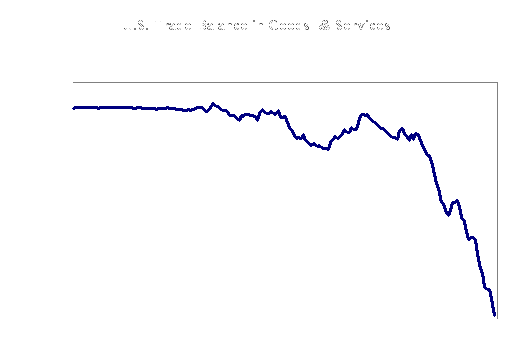Current Account Balance United States
Post on: 16 Март, 2015 No Comment

Current Account Balance United States
The Current Account Balance Summarizes the flow of goods, services, income and transfer payments into and out of the US. The report acts as a line-item record of how the US economy interacts with the world economy. The Current Account is one of the three components that make up a countrys Balance of Payments (Financial Account, Capital Account and Current Account), the detailed accounting of all international interactions. Where the other side of the Balance of Payments, Capital and Financial Accounts deal mainly with financial assets and investments, the Current Account gives a detailed breakdown of how the country intermingles with rest of the global economy on a non-investment basis tracking good and services.
The Current Account tracks the trade balance (exports and imports for goods and services), income payments (such as interest, dividends and salaries) and unilateral transfers (aid, taxes, and one-way gifts). A positive value (current account surplus) indicates that the flow of capital from these components into America exceeds the capital leaving the country. A negative value (current account deficit) means that there is a net capital outflow from these sources. Persistent Current Account deficits may lead to a natural depreciation of a currency, as trade, income and transfer payments usually reflect that dollars are leaving the country to make payments in a foreign currency (just as underlying surpluses act as an appreciating weight). Such depreciation may be offset by capital flows into the country; the TICs or Net Foreign Security Purchases tracks such flows.
Trade balance is typically the largest element of the Current Account. For the past few decades the US has experienced high current account deficits primarily as a result of large trade deficits.
There are a number of factors that often work to diminish the impact of the Current Account release on the market. The report is not very timely, released monthly at least a month after the reporting period. In addition, many of the components that lead to the final Current Account, such as production and trade figures, are known well in advance. Lastly, since the report reflects data for a specific reporting month, any significant developments in the Current Account should plausibly have been already felt during that quarter and not during the release of data.
But just like GDP and Trade Balance, Current Account is central to forecasting long term developments in foreign exchange rates. It gives a detailed picture of how the US economy interacts internationally, breaking down these exchanges into separate components that can be tracked and often anticipated. Thus the weight of the Current Account has led it historically to be one of the more important reports out of the United States .
The headline figure is expressed in billions of dollars.
Relevance: Tends to move markets on release
Release Schedule: 8:30 AM (EST); monthly, in the second month following the reporting month
Revisions Schedule: Moderate, benchmarking occurs in June
Source of Report: Bureau of Economic Analysis, Department of Commerce ( U.S. )
www.bea.gov/
www.bea.gov/bea/di/home/bop.htm
www.bea.gov/bea/international/bp_web/simple.cfm?anon=71&table_id=1&area_id=3
current account (bottom) > Memoranda > Balance on current account (line 76)
AKA: Current Account Surplus/ Deficit














